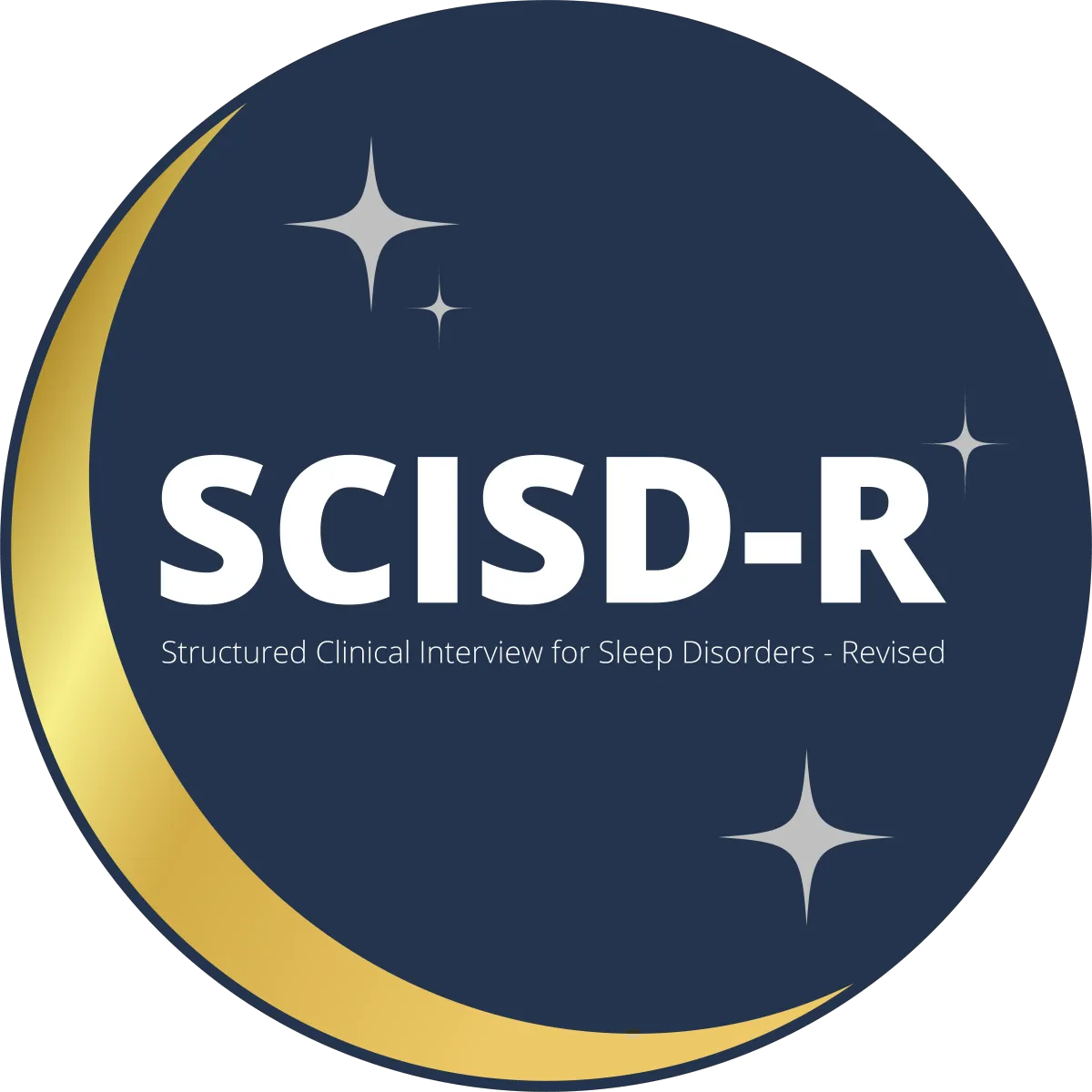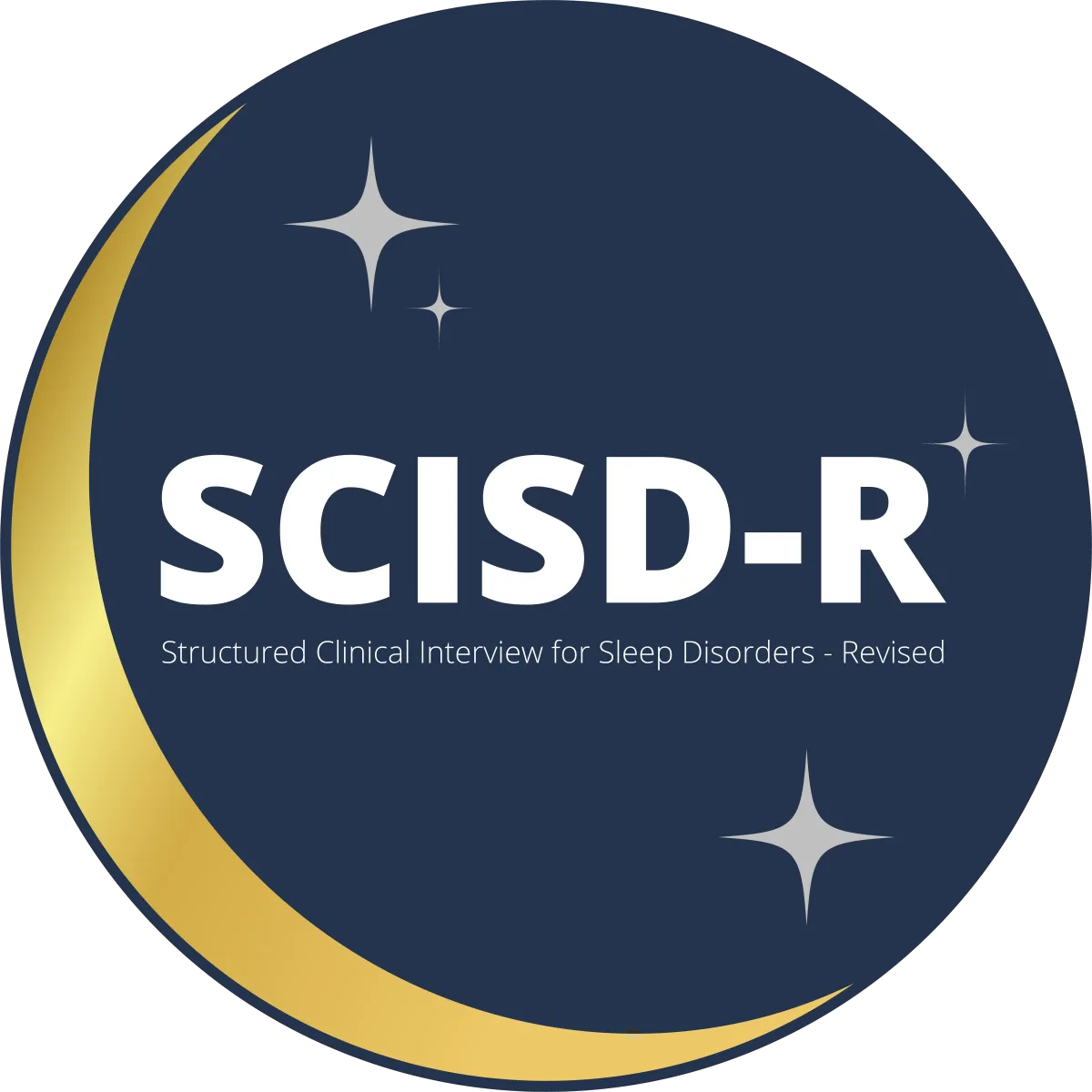Lifetime Access
Certificates of Learning
Access to Leading Experts
Structured Clinical Interview for Sleep Disorder - Revised (SCISD-R)
The SCISD-R is a semi-structured interview designed to collect a comprehensive sleep history and screen for sleep disorders, including insomnia disorder, hypersomnolence disorder, circadian rhythm sleep-wake disorders, sleep disordered breathing, and parasomnias, as defined by the DSM-5-TR. The original SCISD demonstrated adequate reliability (Taylor et al., 2018). This revised version of the SCISD is a newly updated tool, and reliability and validity data currently being assessed (Campbell et al., in preparation). For this study, the SCISD-R Sleep Disorders Module will be used to [STUDY GOALS].
Budget Justification for Training Expenses
Training researchers in the administration of the SCISD-R is essential to ensure accurate, reliable, and valid data collection. This semi-structured interview requires nuanced clinical judgment to differentiate between overlapping symptoms of various sleep disorders, such as insomnia, circadian rhythm disorders, and parasomnias. Proper training minimizes variability in administration and interpretation, ensuring consistency across interviewers and enhancing the reliability of study findings. Training also equips researchers to adhere to standardized protocols, fostering an environment conducive to eliciting accurate and comprehensive participant responses. The online training will include instruction on the SCISD-R structure, instruction in DSM-5-TR sleep disorders, and hands-on practice with mock interviews, ensuring fidelity to the protocol. The budget includes costs for access to the SCISD-R, training materials, and training fees.
Budget Justification for Training Expenses
Financial support for clinician training in administering the SCISD-R is critical to enhance their ability to accurately diagnose and screen for sleep disorders, including insomnia, circadian rhythm disorders, and parasomnias, in clinical settings. The training provides clinicians with essential skills to interpret nuanced sleep symptomatology and adhere to standardized administration protocols, ensuring consistency and diagnostic accuracy. This training supports clinicians in delivering evidence-based assessments. The requested financial support will cover access to the SCISD-R and training fees, allowing clinicians to fully participate without financial barriers. Investing in clinician training ensures the dissemination of best practices in behavioral sleep medicine.
Taylor, D. J., Wilkerson, A. K., Pruiksma, K. E., Williams, J. M., Ruggero, C. J., Hale, W., Mintz, J., Organek, K. M., Nicholson, K. L., Litz, B. T., Young-McCaughan, S., Dondanville, K. A., Borah, E. V., Brundige, A., Peterson, A. L., & Consortium, S. S. (2018). Reliability of the Structured Clinical Interview for DSM-5 Sleep Disorders Module. J Clin Sleep Med, 14(3), 459-464. https://doi.org/10.5664/jcsm.7000
My Publications
-
Rischard, Mollie E., Buck, Tara R., Pruiksma, Kristi E., Johns, Aviva, & Cromer, Lisa D.
Construction and Initial Examination of Inter-Rater Reliability of a Structured Clinical Interview for DSM-5-TR Sleep Disorders (SCISD)--Kid . Behavioral Sleep Medicine, 22(5), 593–610, 2024. Taylor & Francis.
GOT MORE questions?
Frequently Asked Questions
Find quick answers to common questions about our training course, processes, and support.
Still need help? Contact us anytime!
SCISD-R Basics
What is the SCISD-R?
The SCISD-R is a semi-structured clinical interview designed to assess and diagnose sleep disorders based on DSM-5-TR criteria.
Who can administer the SCISD-R?
It should be administered by a trained clinician or healthcare professional with knowledge of sleep disorders, the DSM-5 diagnostic criteria, and structured interview techniques.
What is the purpose of the SCISD-R?
The SCISD-R is used to systematically collect sleep history, diagnose certain sleep disorders, and screen for others that require additional objective testing.
What are the key recommendations for interviewers?
Use a conversational style to build rapport.
Avoid redundant questioning if information is already available.
Do not rely on self-report alone. Clinical - judgment is necessary.
Which sleep disorders does the SCISD-R diagnose?
It provides diagnoses for insomnia disorder, hypersomnolence disorder, circadian rhythm sleep-wake disorders, restless legs syndrome, nightmare disorder, and non-REM sleep arousal disorders.
Which sleep disorders does the SCISD-R screen for?
It screens for obstructive sleep apnea, REM sleep behavior disorder, and narcolepsy, which require additional medical or polysomnographic evaluation.
What sleep disturbances are not included in the SCISD-R?
It does not assess insufficient sleep syndrome, hypnagogic/hypnopompic hallucinations, sleep paralysis, periodic limb movement disorder, central sleep apnea, sleep-related hypoventilation, or substance/medication induced sleep disorders.
SCISD-R Administration and Assessment
How is the SCISD-R structured?
The interview follows a three-column format:
Questions: Standardized queries and follow-ups
Criteria: Corresponding DSM-5 diagnostic elements
Present: Scoring options (0-3)
How is scoring determined?
Scores are based on symptom presence:
? = Insufficient information
1 = Absent
2 = Subthreshold
3 = Threshold (meeting diagnostic criteria)
When do I follow the skip logic in the interview?
Certain sections allow skipping further questions if a patient does not meet an early diagnostic criterion, reducing unnecessary questioning. Skip logic instructions are provided within the SCISD-R interview (in capital bold letters immediately following the questions). Many disorders require endorsement of all assessed symptoms for a diagnosis. Once you are confident that a patient does not meet one of the criteria for a disorder, you may skip to the next section. However, if you are uncertain, you are encouraged to ask all relevant questions to ensure a comprehensive diagnostic assessment.
When should I skip the hypersomnolence disorder module?
If a patient reports sleeping less than an average of 7 hours per night, hypersomnia cannot be accurately assessed. In this case, you should skip the hypersomnia module. The SCISD-R includes a reminder of this in all caps, bold, and italic text at the top of the section.
How should I use the rating system in a research context?
Ultimately, this depends on the nature of the research and preferences of the investigators. In some research settings, it is preferred to only ratings of 1 (absent) and 3 (present) to enhance the reliability of the measure. However, the 2 (subthreshold) rating may be useful for tracking certain disorders or symptoms that require further evaluation or monitoring over the course of treatment in research or clinical settings.
Can I administer the SCISD-R as a self-report measure?
No, the SCISD-R is not intended to be used as a self-report measure. Proper administration requires training in sleep disorders to accurately differentiate between disorders and symptoms. However, the medical history and sleep schedule sections may be completed as self-report, but it is recommended that you review them with the patient to ensure accuracy and clarity.
Is it okay to use only specific modules?
When possible, it is recommended to complete the full SCISD-R interview rather than selecting specific modules. The interview is designed to be brief (approximately 15–30 minutes) and helps differentiate between various sleep disorders. Additionally, patients may not disclose important symptoms unless directly asked, making a comprehensive assessment beneficial.
Am I restricted to the questions listed in the interview?
No, you are encouraged to ask follow-up questions when necessary. For instance, some patients may struggle to describe the sensations associated with Restless Leg Syndrome, so interviewers are encouraged to ask open-ended questions to gather information. However, follow-ups should not stray unnecessarily from the content of the questions.
Comorbidities and Diagnoses
How do you proceed if a patient meets criteria for more than one sleep disorder?
It is common for someone to meet criteria for more than one sleep disorder. For example, insomnia often coexists with nightmares, circadian disorders, and obstructive sleep apnea. Unless it is clear that one disorder fully accounts for the other, both disorders should be diagnosed. In a treatment context, you can monitor the symptoms of one disorder while treating the predominant disorder to observe if symptoms of the other change.
How do you diagnose nightmares in the context of PTSD?
Nightmares are a common symptom of PTSD, but they can also be a comorbid disorder. When assessing nightmares, they should be evaluated as a separate symptom to determine if they occur as part of PTSD or as a standalone disorder.
How do I determine if sleep symptoms are due to another mental disorder, substance use, or medical condition?
If sleep symptoms began before the onset of the mental disorder, substance use, or medical condition, or if they would likely persist after the condition resolves, then it is unlikely that the disorder or substance fully accounts for the sleep issues. In these cases, a primary sleep disorder should be considered. However, it is often very difficult for patients and assessors to determine this information.
Can obstructive sleep apnea (OSA) and narcolepsy be diagnosed with the interview alone?
No, obstructive sleep apnea (OSA) and narcolepsy cannot be diagnosed solely through the interview. These modules serve as screening tools. If a patient meets criteria during the interview, they should be referred for a sleep study to confirm the diagnosis.
Consultation and Training
As a tier 3 trainee, how do I sign up for consultation?
[insert steps here]
What about consultation after training?
Ten hours of consultation are included with the Tier 3 training. For Tier 1 and Tier 2 trainees, consultation is available upon request from the experts at an hourly rate.
Can I upgrade to a higher tier of training?
Yes, [insert steps here]
Website Navigation
How do I register for the training?
[insert steps here]
How do I access my training materials?
[insert steps here]
I’m having trouble logging into my account, what should I do?
[insert steps here]
How do I track my progress in the training program?
[insert steps here]
Can I download certificates of completion from the website?
[insert steps here]
How can I contact the SCISD-R team for assistance?
[insert steps here]
It’s been 10 business days and my assignment has not been reviewed yet, what do
I do?
[insert steps here]

© Copyright 2025. SCISD-R Training Course.
All Rights Reserved.
